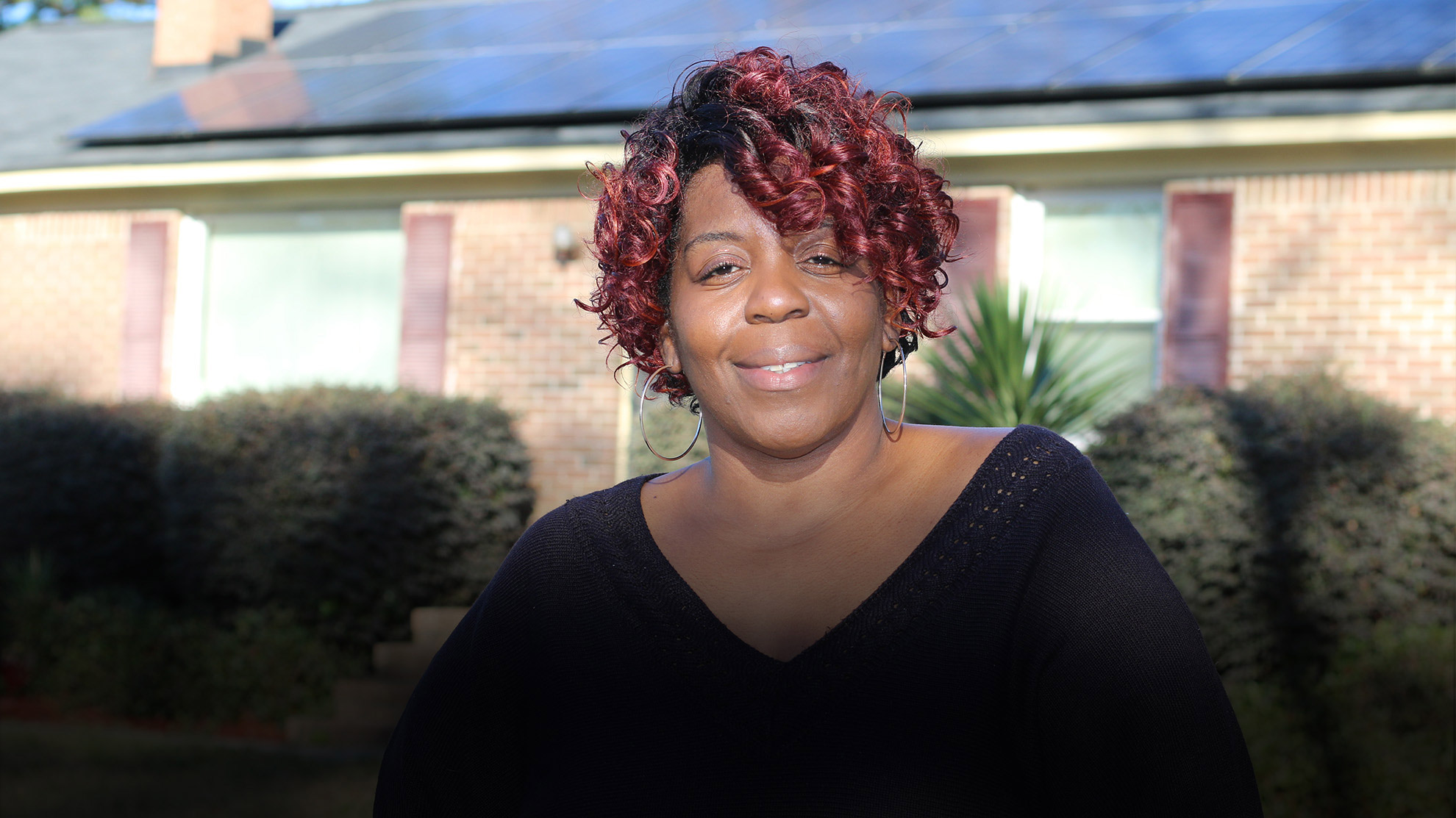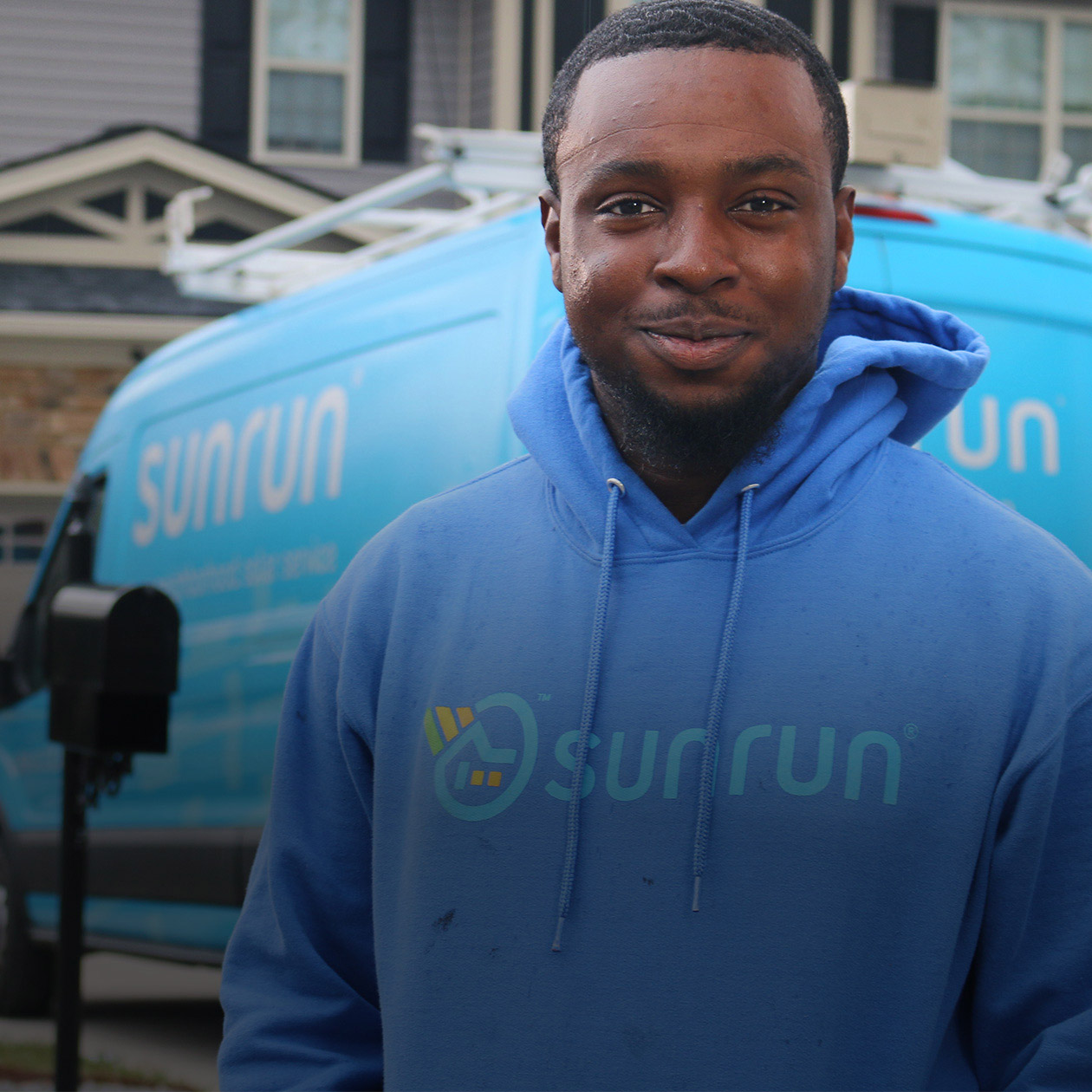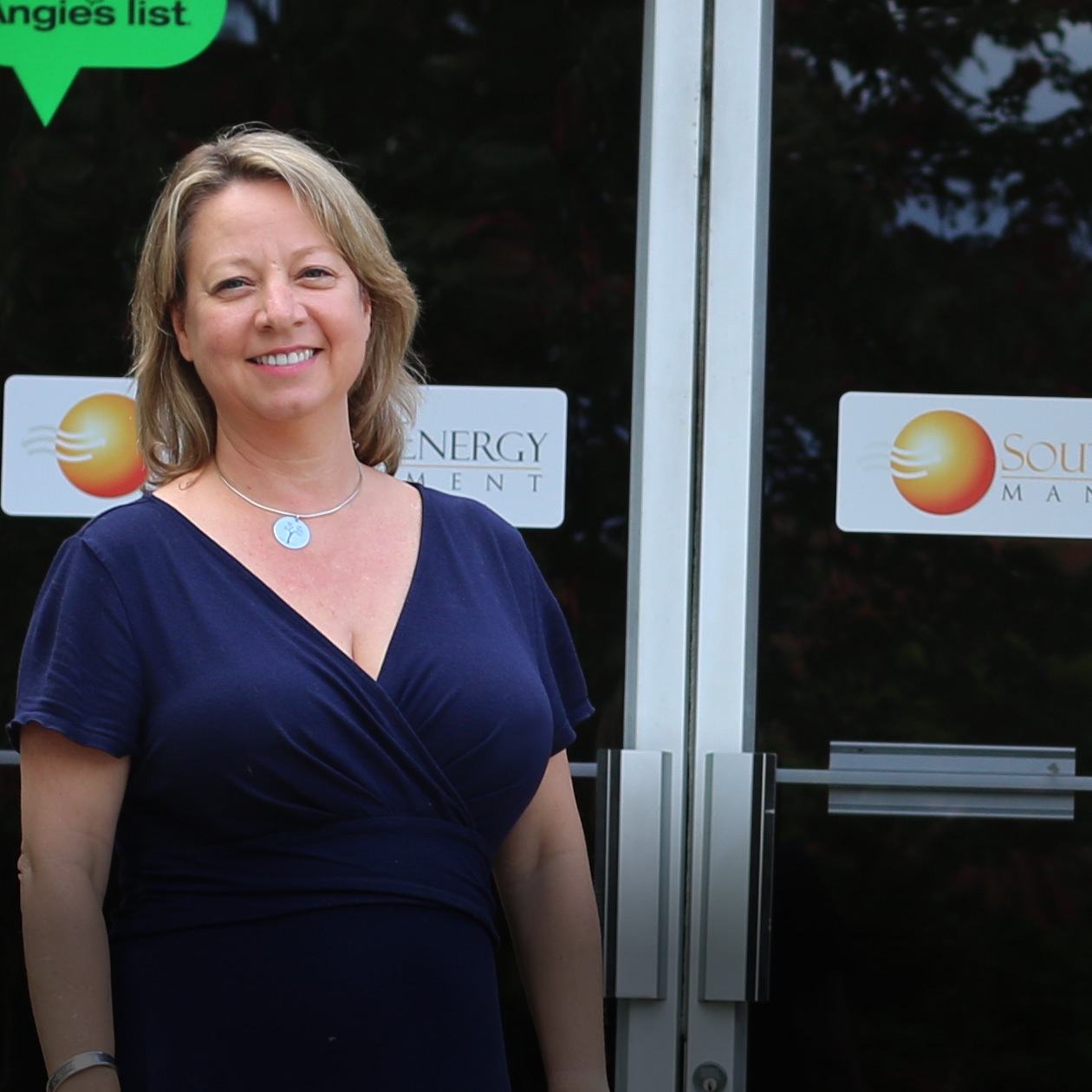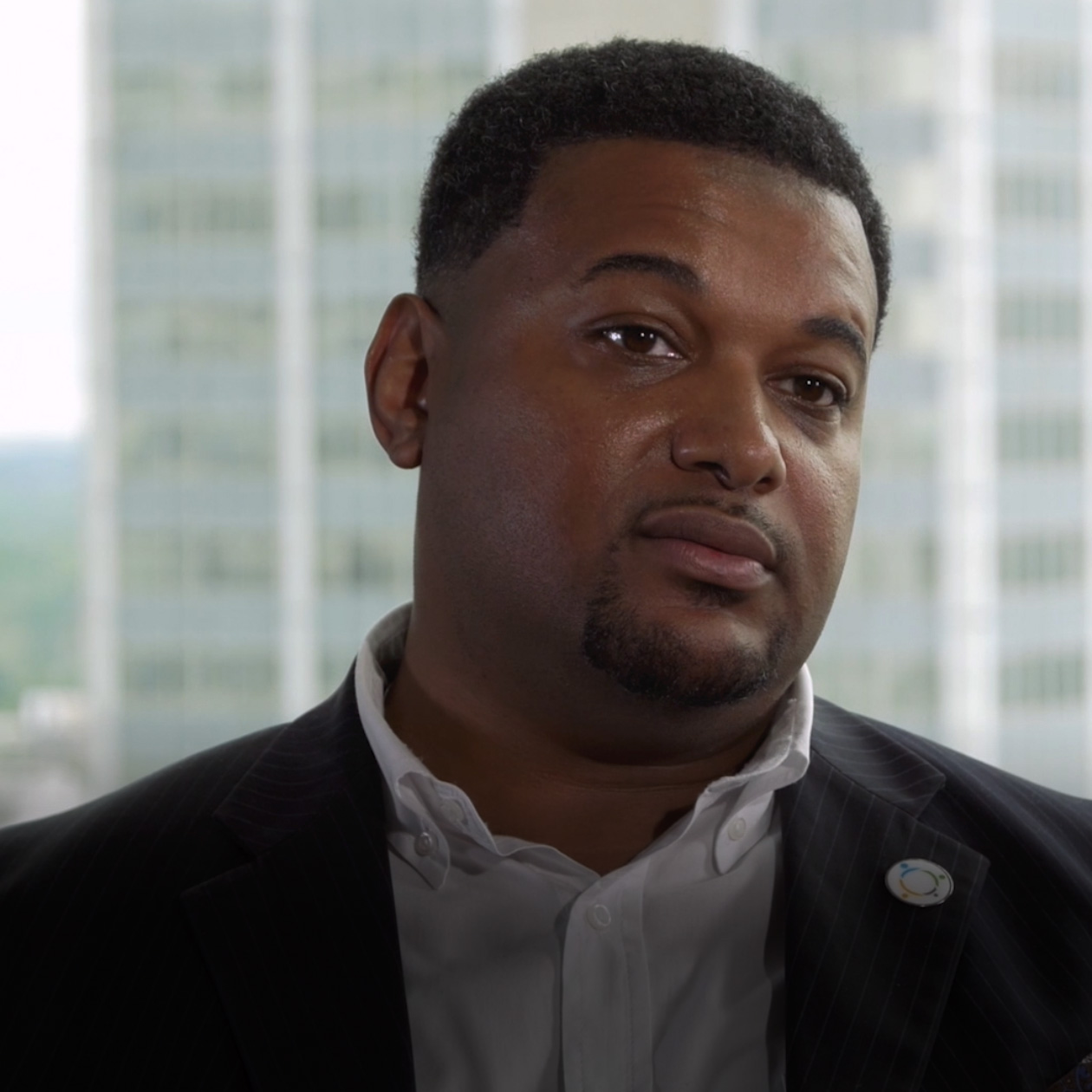Jacqui McLeish
Jacqui McLeish will be the first to admit she went solar for the money, not the planet.
“Environmental footprint? You could just wash that away,” she says with a laugh and a sweep of her hand. “It wasn't really my cause. It was solely about saving money, making sure that I can live a better quality of life.”
A single mother with a son in the Air Force, McLeish lives in a modest one-story home in West Columbia, South Carolina. She’s not a person many folks would assume could afford solar. However, like more and more homeowners around the country, McLeish was able to get her solar panels without paying a penny up front. Instead, she signed a 20-year lease with her local solar installer.
It wasn’t a move she made lightly.
“That’s a long time,” McLeish admits. “You don't want to just jump into it. But after I worked out the numbers, saw what I would be saving, saw how South Carolina Electric & Gas (SCE&G) raises their rates every year by 3 to 5 percent, it was a no brainer!.”
With an affordable monthly lease payment and no upfront costs, the savings were immediate for McLeish.
"Since I started with my solar panels, I'm saving, on average, about 40 percent on my bill,” she explains. “So that works for me.”
With just her and her son living in their 1,155 square foot home, McLeish used to pay an electric utility bill of about $250 a month. Since her rooftop solar panels were installed, that bill has dropped precipitously — as low as $28 per month in some months. Factor in the $100 monthly lease payment she makes for the panels — and the fact that McLeish likes to keep her home toasty in the winter — and she’s still saving about $1,200 annually thanks to solar.
McLeish’s face lights up when she thinks about the money she’s saving. “I weighed what I could do with the extra savings — a better car, better house.”
Cutting electricity costs is particularly impactful in a state like South Carolina. Although it ranks forty-third in median household income, its residents pay the nation’s highest electric bills. Why? In part that’s because South Carolina utilities are charging customers a monthly fee to recoup the costs of a failed nuclear power plant construction project. McLeish’s utility charges her and other residential customers about $27 a month for that line item, even though they’ll never use a kilowatt of energy from the failed V.C. Sumer project.
“SCE&G's rates are high, they're extremely high, and we end up paying for things that I have no clue of what I'm paying for,” McLeish laments. “My solar panels, I know what I'm paying for [and] I know what my costs are.”
With flexible lease agreements and year-round sunny weather, solar just makes sense for South Carolinians and other Southerners like Jacqui McLeish. And she’s not the only one in her neighborhood — or even on her street — who’s noticed.
In fact, there are at least four other homes with solar panels in her immediate neighborhood — a racially diverse, middle class community of one-story brick homes with chain-link fences, above-ground pools and American flags flapping in the warm South Carolina breeze.
“Solar is definitely not just for rich people,” McLeish says. “I'm far from rich, so if I can do it, just about anybody else can.”




